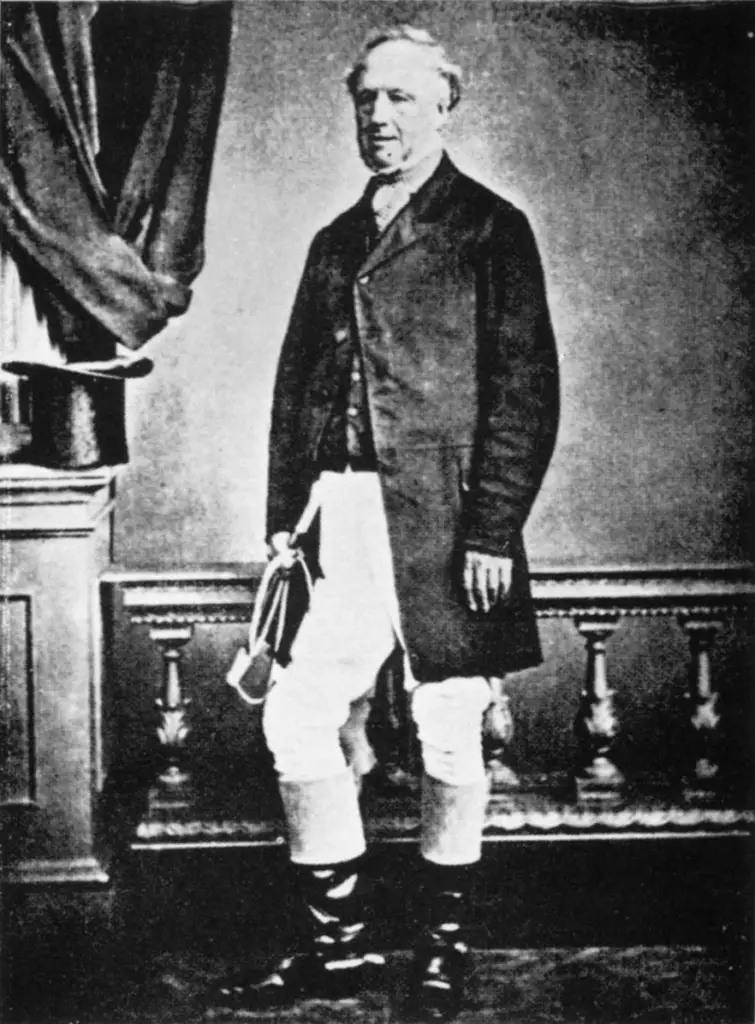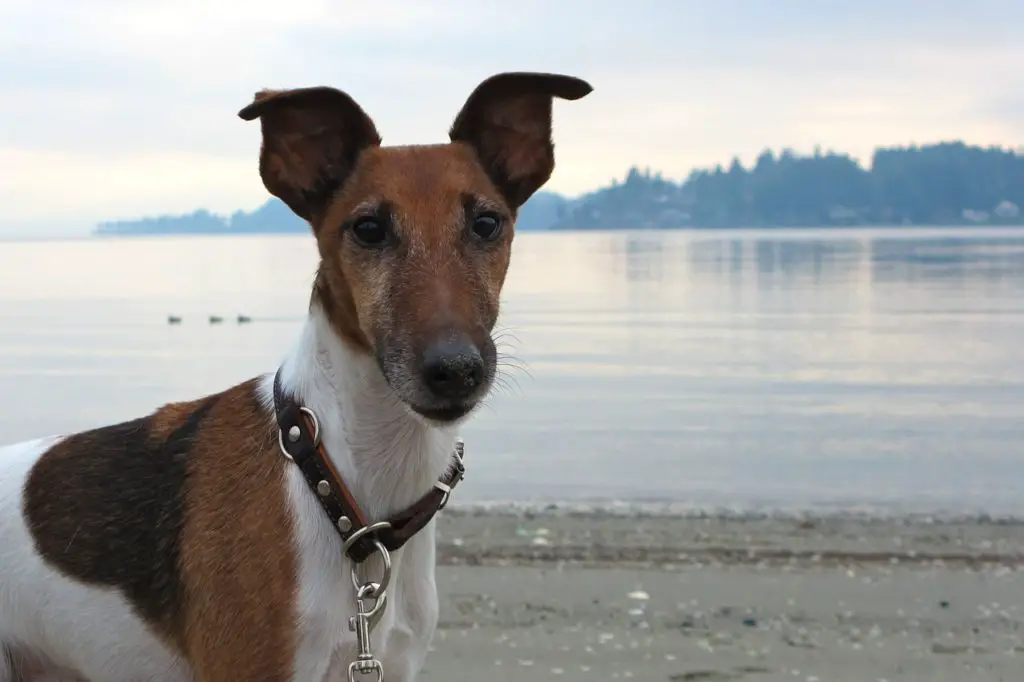Table of Contents
You might have noticed that the term “Jack Russell Terrier” covers a lot of different-looking dogs. And there are a number of dogs with a similar look that aren’t technically JRTs.
*This post may contain affiliate links. As an Amazon Associate we earn from qualifying purchases.
So how do all these different dogs fit together — or not? And what are the differences?
Parson Jack Russell
Parson John “Jack” Russell (1795-1883) was a vicar and rector in Devon, England. He was also an avid sportsman and hunter.

His interest in hunting led him to the quest to develop the ideal hunting dog. He wanted a hunting companion that would be fast, smart, determined, and filled with boundless energy.
Sound familiar?
Russell founded his line on a bitch named Trump, a white dog that belonged to the local milkman. Not only did Trump have the right disposition and build, but she was also the right color.
One problem with many hunting dogs at the time was that they looked too much like the foxes they were chasing and were sometimes mistaken for foxes by hunters. Trump, a mostly white dog, didn’t have that problem.

Russell’s interest in dog breeding would lead him to found the Fox Terrier Club and the British Kennel Club. Both of these clubs still exist today.
The Jack Russell Terrier, Russell Terrier, and Parson Russell Terrier were both developed by Parson Jack Russell.
What about the Fox Terrier? Well, three dogs are credited as the founders of the modern Fox Terrier breed: Trap, Tatar, and Old Jock. Trap was owned by Parson Jack Russell, who also worked hard toward developing this breed.
The Jack Russell Terrier
Although Parson Russell founded two breed clubs and was intimately involved with writing and maintaining breed standards, his interest wasn’t in show dogs. His dogs, he insisted, were bred to work.
Russell likened show dogs to carefully cultivated flowers, while working dogs, to him, were like wildflowers.

The Jack Russell Terrier is the working strain of this hardy little dog. As such, there are a wide variety of sizes and appearances that meet the breed standard.
And this is why there are so many JRTs that look quite different from one another.
Coat colorings
A Jack Russell Terrier can have a surprising number of coat colorings and patterns, from pure white to white with patches of black, tan, sable, red and “lemon” (very light brown). Many have saddle-shaped markings, while others may have a few spots or a ring around one eye.

All of these are accepted variations, and we think you’ll agree, they’re all beautiful in their own right.
Smooth-Coated Jacks
Many JRTs have a single, smooth coat. Their hair is short and sleek and lies in one direction. If you live in a cold climate, your smooth-coated Jack may appreciate a wee jacket in the winter months to help stay warm.

Wire-Coated Jacks
A wire-coated Jack has a double coat: the smooth, short under-coat, and a longer, rough coat on top. This double coat is waterproof and helps to protect against both moisture and cold.

A wire coat does take a bit of work to groom, though. Twice a year, your wire-coated Jack will “blow” or shed their coat.
If you have a wire-coated Jack, you’ll need some special tools and techniques to keep them looking their best. But don’t worry! Once you get the hang of it, it can be fun and easy for you and your dog.
Broken-Coated Jacks
A broken-coated Jack has a combination coat. The coat is smooth in some places and rough in others. The proportions of smooth to rough can vary from dog to dog, but most are at around 50-50.
Temperament
Some say that the Jack Russell Terrier, which, in modern times often finds itself “working” as a companion dog, is more mellow than the Parson Russell Terrier.
But all of these breeds are energetic, with a need for mental and physical activity. Is one more mellow than the other?
We’ll leave that for you to determine!
The Russell Terrier
You might also know the Russell Terrier by these names: the Shorty Jack, the Puddin’ Jack, and the Australian Jack Russell. The main difference between these and Jack Russell Terriers is their size.

Shorty Jacks typically max out at eight to 12 inches high at the
But these short dogs are long on energy and personality.
Parson Russell Terrier
The Parson Russell Terrier is the show variation of the breed. Parsons

It’s not discrimination. The Jack Russell Terrier Club of America wanted to make sure that JRTs retained their working dog status. They feared that AKC recognition would eventually cause breeders to value appearance over working ability.
As a result, JRT breed standards have a wide variety of acceptable variations on appearance. Conformation standards for Parsons, though, are much stricter.
Other differences
Parsons

Some also say that Parsons are less mellow than Jack Russells. Though, again, this will differ from dog to dog, and your mileage may vary!
Fox Terrier
Fox Terriers are one of the breeds that contributed to the development of the Jack Russell, Russell, and Parson Russell Terrier breeds. Parson Russell himself was a founder of the Fox Terrier Club, and helped to develop the breed into its modern form.
There are two main variations: the smooth-coated Fox Terrier and the wire-coated Fox Terrier. In coloring and shape, they are similar to the JRT, but not exactly the same.
Wire-coated Fox Terrier

Of the two fox terriers, the wire-coated Fox Terrier is more easily distinguishable from the JRT. Its boxy head gives it an appearance similar to that of an Airedale, rather than a JRT. Grooming of the face and legs can accentuate these similarities.
Smooth-coated Fox Terrier
Looking at the smooth-coated Fox Terrier, it would be easy to mistake it for a taller, smooth-coated JRT. The head shape is similar, as is the coloring and body shape. The Fox Terrier, however, is a bit taller.

The Smooth Fox Terrier is considered a “vulnerable breed” in Britain. That means that there were fewer than 300 annual registrations of individuals with the Kennel Club. By contrast, there were more than twice that many wire-coated Fox Terriers registered.
Artist Charlotte Mutsaers is a devotee of smooth Fox Terriers, and puts one in many of her paintings.
The Many Legacies of Reverend John Russell
Parson Russell gave us a lot to be thankful for. Not only one breed that bears his name, but three — and four that are his legacy, if you include the Fox Terrier. And who wouldn’t?
Which is your favorite? Have you owned more than one of these varieties? Which one would you recommend and why?
Featured Image: CC BY-SA 4.0 by Laviolettajack, via Wikimedia Commons

